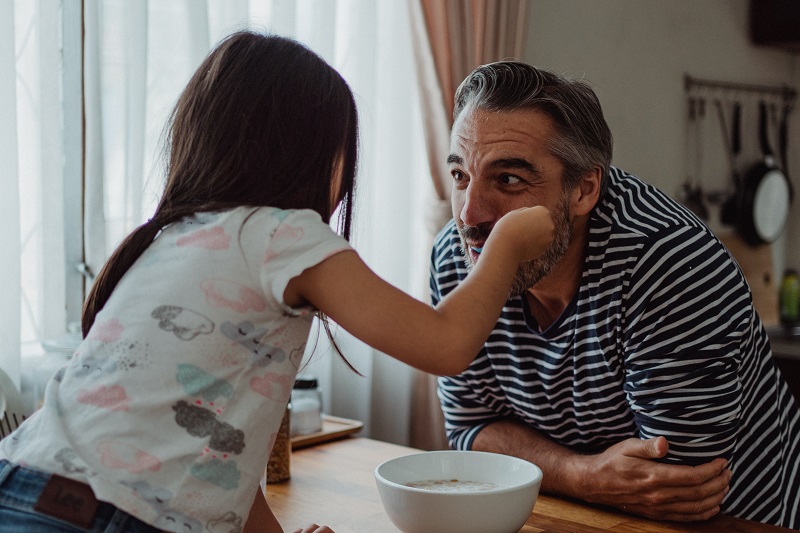Your job isn’t to make things perfect… we are not here to protect them from reality but to support them as they actually face it.
Mary Anne Ware
Maybe it’s the untouched breakfast cereal…
Or the nervous questions at bedtime…
Or an outright refusal to get out of bed…
Whatever signs are alerting you to the possibility your child’s experiencing back to school anxiety, rest assured:
You’re not alone. It won’t last forever. And you can help more than you know.
Read on for 6 strategies you can use to support a child with back to school anxiety:
1. Be mindful of your own anxiety.
How do you feel about the start of school? From bidding summer farewell to navigating seasonal depression to gearing up for another school year, the transition from summer can be hard on parents. (And the stress can be further compounded for those who work with students!) For some parents, this stress can elevate the chance of experiencing anxiety themselves, which can make everything more difficult.
TRY THIS:
Prioritize your own emotional wellness by creating space in your schedule for self-care. Reach out for professional support when you need it.
2. Watch (and listen) for worries.
It might be a clear expression of worry (e.g., “I’m scared that _______ will happen…”) or a more general statement (e.g., “I hate school!!”). It might manifest in sleep difficulties or changes in appetite or straight-up refusal to get moving in the morning. By watching for a range of signs your child may be experiencing back to school anxiety, you’ll be better equipped to help them manage it.
TRY THIS:
Ask open-ended questions (e.g., “How are you feeling about school starting up?”) and listen closely for the language your child is using. If your child has difficulty putting their feelings into words, inviting them to draw a picture of how they’re feeling can be a helpful start.
3. Practice patience.
Life is busy. When children express worries, especially during hectic times of day (e.g., in the carpool line, during dinner prep, 20 minutes after bedtime…), it can be challenging to remain patient with them. This often leads parents to make hurried, surface-level, “band-aid” statements in an attempt to erase the anxiety.
TRY THIS:
Resist the urge to try and talk your child out of their worries (e.g., “You’ll be fine. There’s nothing to be afraid of.”). Not only is this approach unlikely to change how your child is feeling, but it also can have the unintended effect of shutting down further conversation.
4. Show empathy.
Often, we jump straight to “problem-solving” for our children, but this isn’t always necessary or even helpful. Most likely, what your child needs in the moment is your care and attention. By offering them your full focus, reflecting what you’re hearing, and putting yourself in their shoes, you’re letting your child know that their thoughts and feelings matter to you. This can be incredibly soothing.
TRY THIS:
When your child voices a worry (e.g., “What if someone is mean to me?”), reflect the emotion back through a restatement (“You’re worried someone might be mean to you…”). Then empathize by putting yourself in your child’s place (“That’s a very big worry. I understand why you wouldn’t want that to happen. I sometimes used to have school worries like this when I was your age…”).
5. Provide reassurance…
Once you’ve demonstrated empathy, it can be helpful to offer some gentle reassurance. The key is to keep the statements simple and heartfelt.
TRY THIS:
Create a list of simple reassuring statements you can choose from when your child’s feeling anxious. Some ideas:
- “This feeling won’t last forever. Let’s find a way to pass the time until it does.”
- “You’re brave to feel this worry and still try. I’m proud of you.”
- “We’ll get through this together as a team.”
6. …but not too much reassurance.
No parent wants their child to experience unnecessary pain. And yet the ability to cope with worry is one of the most vital skills a child can develop. When we fall into a pattern of repeatedly reassuring our children about the same things, we’re enabling them to avoid the feeling of worry altogether, which is actually counterproductive. By helping your child equip themselves with the tools they need to effectively cope with worry, you’ll be helping them care for themselves independently (and sustainably) as they grow!
TRY THIS:
Brainstorm with your child ahead of time about some tools and strategies they can use when they’re dealing with worry. (Need help getting started? We’re here for you.) Then, when they express a worry, offer a reassuring statement and help them pivot to problem-solving mode (e.g., “What helped you most when you felt this way last time? Want to try that again this time, or would you rather give something else a try?”).
Enjoy this post? You might also like:
How to Practice Gratitude When You’re Not Feeling Particularly Grateful
Self-Compassion: 4 Ways to Start Practicing It Today
Your Emotional Wellness: 50+ Ways to Support It
Dealing with back to school anxiety? Could you use some extra support?

